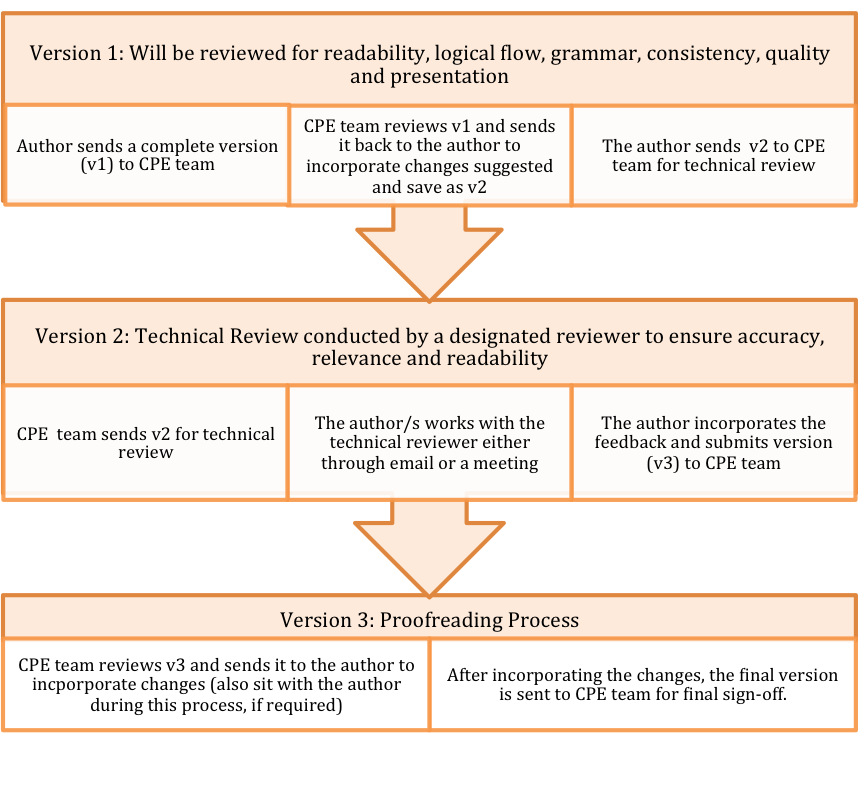+As a policy research organisation, CSTEP is in the business of producing large amounts of written communication. In order to improve the quality of its research products, such as reports, policy briefs, articles, presentations, etc., CSTEP hired an editor as part of its Communication and Policy Engagement (CPE) team. CSTEP believes, and rightly so, that the editorial quality of its research products plays a very crucial role in the brand image of the organisation.
Components of Editorial Quality
Editorial quality consists of the following key components: grammar, logical flow and technical verity.
- Grammar – a set of rules guiding the structure of a language – is the agent of cohesion that strings a bunch of words into a sentence; it can make or break the original message of any written communication.
- It also wields immense power in the communication of ideas and their logical flow. Punctuation marks are the foundation pillars that support the walls of ideas. If a piece of writing is not logically structured, then ensuring effective communication can face a major setback.
- In addition to these language-related aspects, the information contained in a document must be absolutely true and evidence-based.
Based on these considerations, CSTEP decided to design and implement a ‘Review Process’ for quality management purposes. The organisation’s management has clearly demarcated “Ensure high quality of document” as one of the key objectives in its Organisation Strategy document.
CSTEP’s Review Process
After a lot of practice and trials, CSTEP developed a workable Review Process to ensure that it only published high quality documents. After testing the first version of the Process and receiving feedback from relevant users, it underwent two rounds of iterations.
The Review Process essentially contains three core levels of checks:
- Content edit – the document is checked for grammatical errors and the soundness of the flow of thoughts
- Technical review – the document is checked by a subject expert to ensure factual accuracy
- Final proof and aesthetic checks – the document is checked for visual and formatting consistency, and a final high-level content review is conducted.
The current version of the Review Process that is being followed by CSTEP has been represented in the Figure below.

For different types of documents, the weightage assigned to each component/level as well as the time spent for each level varies. For instance, while the content edit of a report might take 4-5 days, the same job is completed within one working day for a newspaper op-ed. The variation in the weightage and time allotted to each level depends on several factors, such as:
- Topicality of the content
- Length of the document
- Presence of external sources of checks, especially in the case of articles submitted to scientific journals
- Intended audience
The introduction of specific templates for different types of documents and a revised Standards and Guidelines have helped authors/researchers and those involved in the Review Process significantly. In order to understand the editorial requirements better, all authors are also requested to provide the CPE team with the following details, in the form of a Publication Information Form:
- Name/s of author/s
- Abstract
- Type of document
- Intended audience
- Publisher – Newspaper/scientific journal/CSTEP/Funder
Conclusion
The organisation, as a whole, works towards ensuring that the Review Process is followed. It has helped CSTEP improve the quality of the content it produces significantly, a fact that is being acknowledged by several external well-wishers and stakeholders. It is not only packed with appropriate content but also visually appealing.
It has also helped researchers to mould the way they think in a more logical and structured manner. They have learned to appreciate the different expectations from different groups of audiences, thereby serving information demands better. This Process has become an agent of cohesion, much like punctuation marks, and its benefits are helping CSTEP project an image of credibility, objectivity and honesty.
Taking this process to the next level, CSTEP is exploring the possibility of instituting a Document Tracking System. The key objective is to create a central repository, which will allow authors, reviewers and research managers to track the progress of any piece of writing. This way different versions of one article, comments provided at different stages of the Review Process and collation of recurring errors will all be captured; an important instrument of constructive feedback to help researchers improve their writing skills. The system will also include a pre-submission announcement option – researchers will be encouraged to plan their writing in advance – to help the editor plan a structured editorial schedule.

